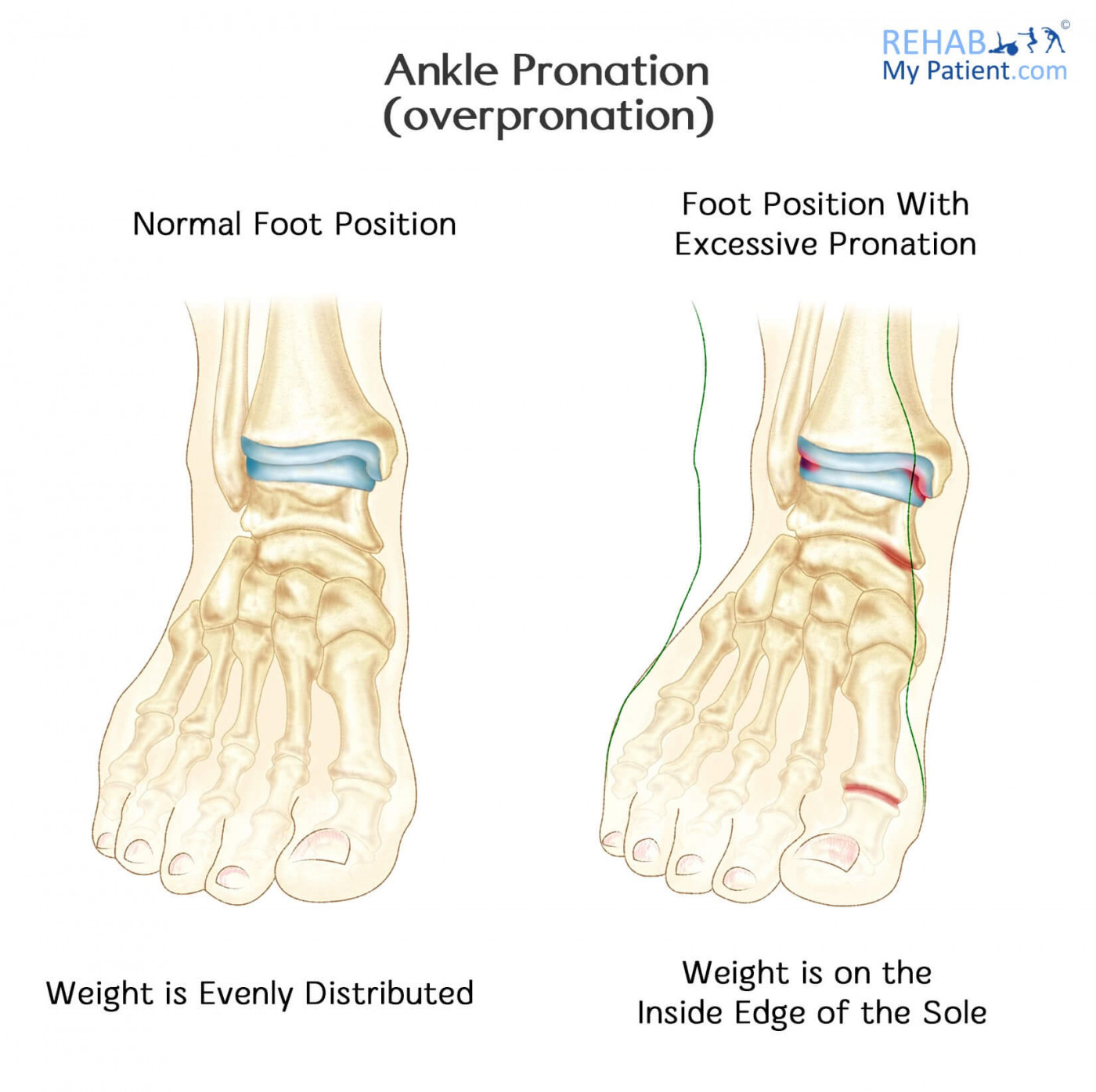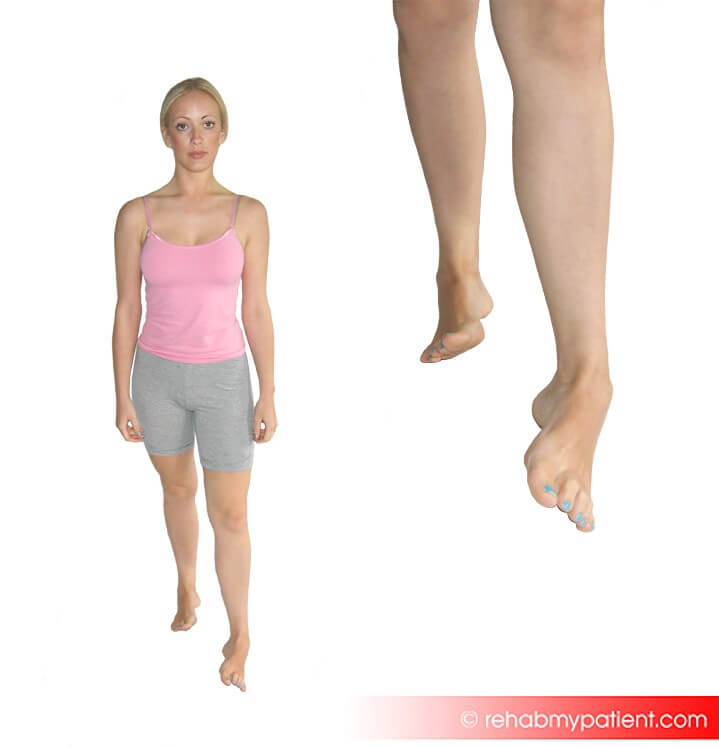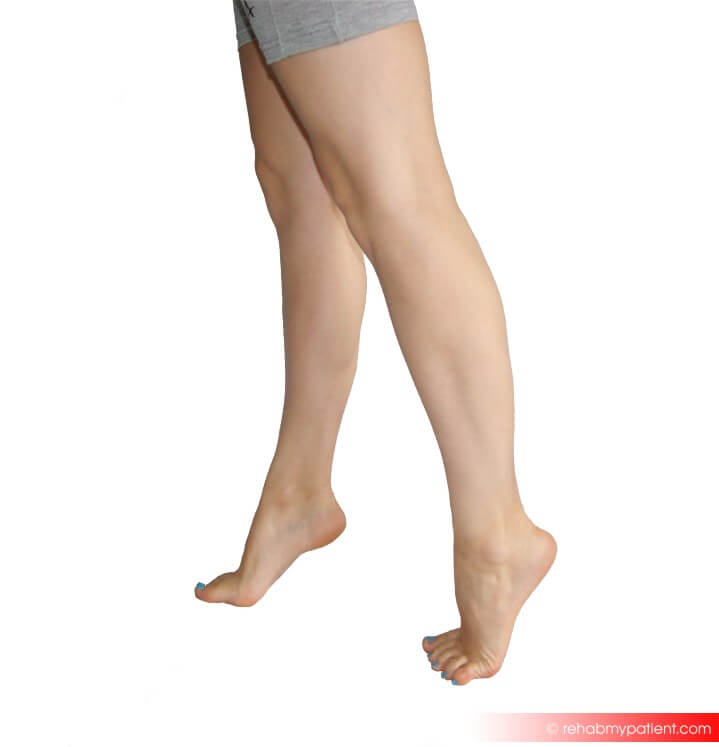Ankle Pronation (Overpronation)
Posted on 31st Mar 2017 / Published in: Ankle

Ankle pronation is simply an inward movement of the ankle. It is a movement that occurs naturally when we walk and involves inward rolling of the ankles. When this movement is excessive, overpronation occurs and the arch of the foot is decreased or flat. Pronation does not only occur in people with flat feet, as people with high arches can also demonstrate pronation or ‘’rolling-in ankles’’.
Pronation occurs due to muscle weakness or imbalance of alignment in ligaments and bones of the ankle.

Signs & Symptoms of Pronation
- The ankle bones on the inside of the arch can be prominent.
- The Achilles tendon (seen from behind) is curved inwards and not straight as it should be.
The individual with excessive pronation may experience:
- Pain or discomfort in the arch and sole of the foot
- Pain in the ankle, knees and hips on running or walking
Pronation causes wear on the inner side of the shoes faster.
Orthotics, Exercises or Leave Alone?
There is a debate amongst physiotherapists – should the pronating ankle be treated, or left alone? It really depends on each person’s circumstances.
Orthotics are one option, and they fit inside the shoe as an insole. This will give support to the inside arch, and help to put the foot into a different biomechanical position.
Exercises are another option, as the muscles can be strengthened in the foot to allow the inside arch to raise slightly. However, it can take time to achieve results and it may not be possible to get a full arch back, depending on the position of the bones.
Leave it alone is an option favoured by many especially in cases where pronation or flat feet are thought to be long-standing or genetic. If the foot has been in this positon for many years and caused minimal problems, then why change it, perhaps the body has already adapted to the foot position.
If a patient is suffering with chronic pain or unresolved problems with the lower limb or hip, then the case is there for some kind of intervention, being either exercise prescription or orthotics.
How to Manage Pronation
Pronation can be managed by simple and effective means such as orthotics, which will correct misalignment of the ankle and relieve the discomfort.
Using shoes with firm heel counter can achieve extra support in the ankle.
If untreated, pronation may lead to imbalance of the other joints in the lower limb and, subsequently, have a negative effect in overall posture and balance.
Exercises
Balance, calf strengthening, ankle mobilisation, and walking on the outside of your feet, and tip-toe standing exercises can be useful for rehabilitating and reversing the effects of overpronation. This should be advised from your physical therapist who will do a biomechanical assessment of your feet and lower limbs.


Sign UP
Sign up for your free trial now!
Get started with Rehab My Patient today and revolutionize your exercise prescription process for effective rehabilitation.
Start Your 14-Day Free Trial